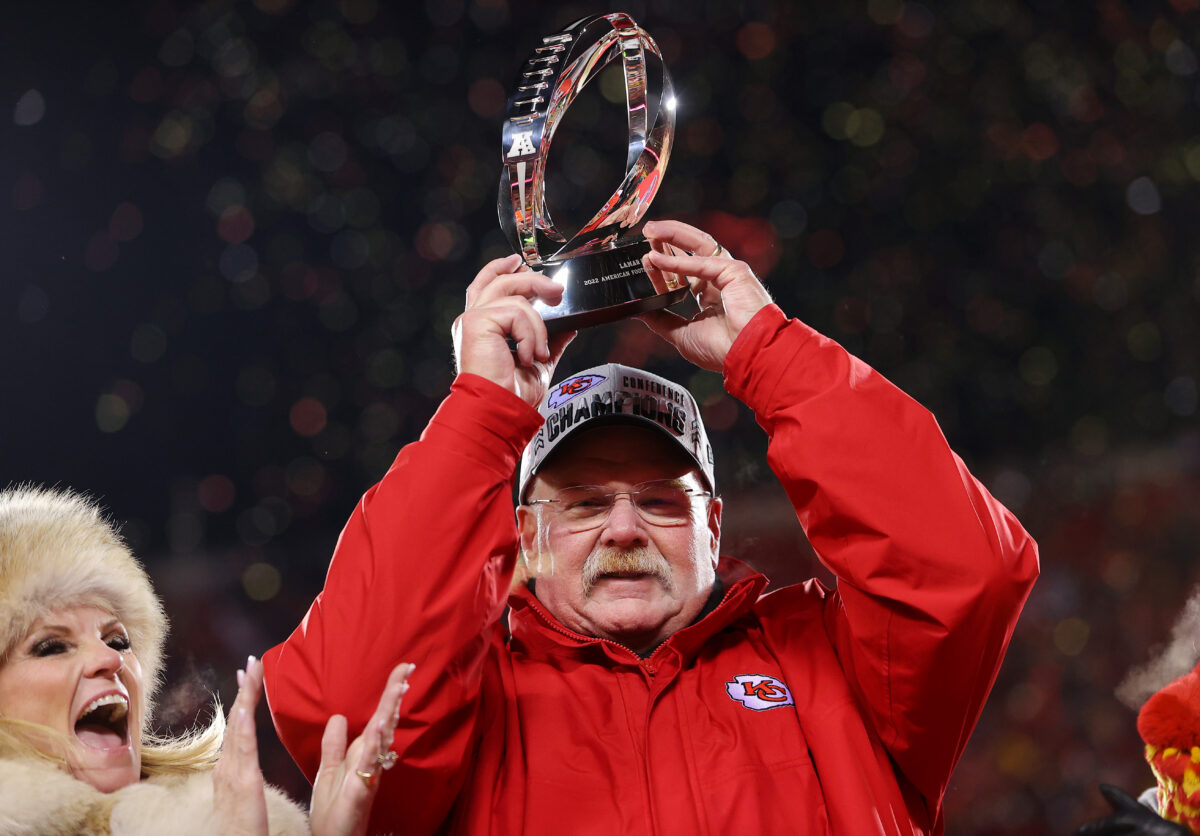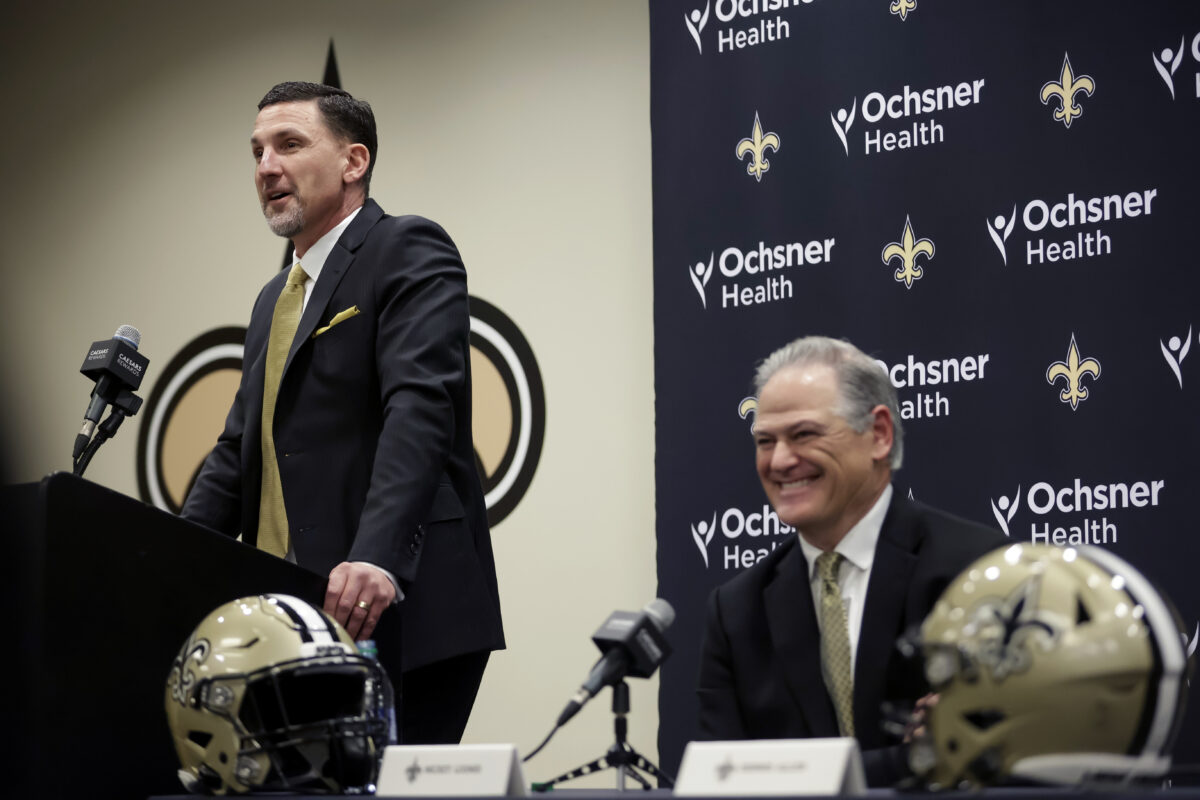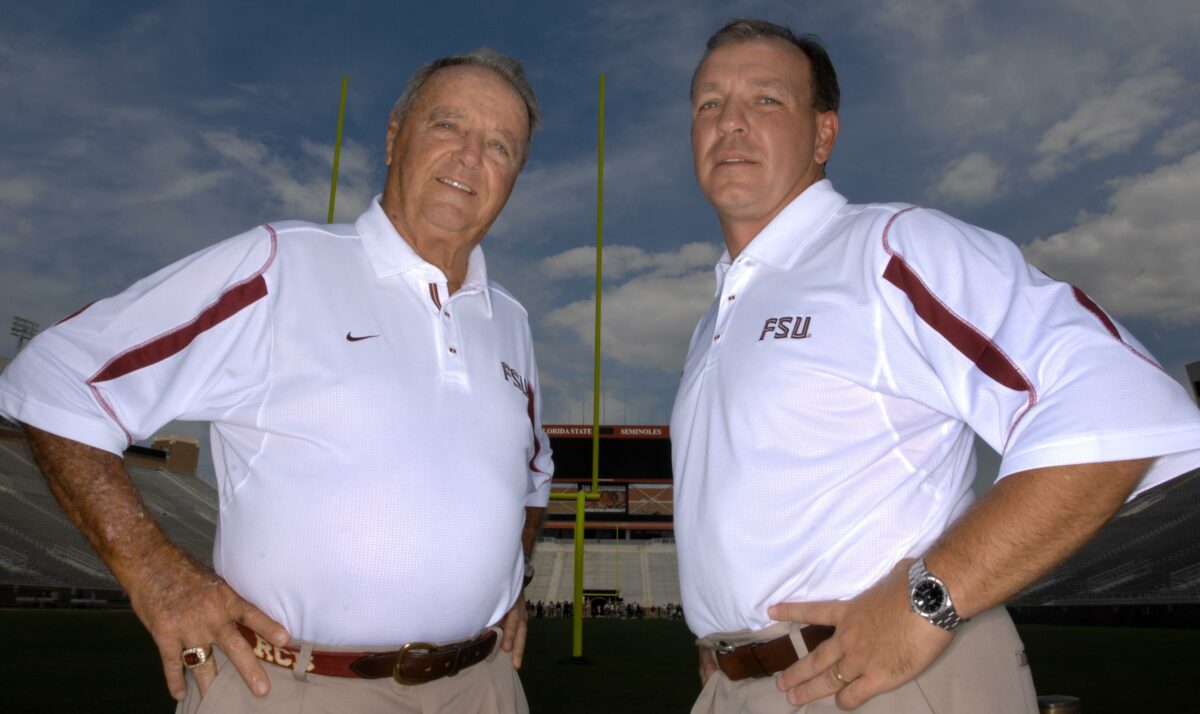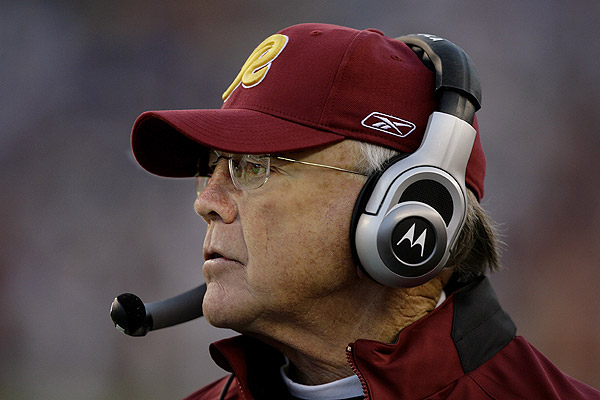Part 1 of Doug Farrar’s “Emotions in Motion” series presented an overall view of the advantages of pre-snap motion, and some level of angst as to the percentage of coaches who refuse to avail themselves of this cheat code. Part 2 took a deep dive into Aaron Rodgers’ enlightened views on the concept through the eyes of head coach Matt LaFleur. In Part 3 of the series, let’s get into the Wayback Machine to discover how Bill Walsh (no surprise there) became the first offensive play-designer to make pre-snap motion a primary construct of his playbooks.
Though most professional football offenses were far more formationally stationary in previous eras than they are today, there were those coaches who experimented with throwing defenses off-kilter with pre-snap motion. Sid Gillman and Tom Landry were two in a small group, and the fact that those coaches are among the game’s all-time greatest innovators fits nicely with the idea of thinking outside the box to throw off defenses that were also far more cookie-cutter in previous eras.
But it was Bill Walsh, more than any other coach, who brought the gospel of pre-snap motion to the field in highly effective ways. Starting with his time as the Oakland Raiders’ running backs coach in 1966 — where he worked under Al Davis, who ingested most of what he knew about the passing game from his earlier time with Gillman — and then as the Cincinnati Bengals’ offensive coordinator under Paul Brown from 1968 to 1975, and certainly as the San Francisco 49ers’ head coach from 1979 through 1988, Walsh saw no issue with using pre-snap movement as a force multiplier in an offense that was as much art as it was science.
But as voluminous and well-thought as most of his innovations were, this came from random chance. In his autobiography, “Building a Champion,” Walsh described how he started to use the tight end in motion from one side of the formation to the other.
“We used the tight end in motion first by mistake,” he said. “Cincinnati was playing the Raiders in Oakland. In the third quarter, Bob Trumpy lined up on the wrong side by mistake. He had to shift over quickly to the other side, and all hell broke loose. At that time, the Raiders had very specialized [defenders]. They had a weak-side linebacker, they had a strong-side linebacker, they had a defensive end who only played on the tight-end side, and they would shift their two inside linebackers. They all ran into each other in the middle of the field, trying to adjust.”
After the game, offensive line coach Bill Johnson suggested to Walsh that the Bengals put motion in the playbook on purpose. Walsh said that they looked at each other and doubled over laughing at first, but that’s how motion became a seminal part of the Walsh offense. And the motion concept was mostly nightmarish for the more static defenses of the time. Against defenses with specific linebacker designations (weak-side and strong-side, strong-side being the linebacker lined up over the tight end), Walsh could direct his tight end to create unfavorable matchups.
“If a weak-side linebacker was fast but had trouble handling a big, blocking tight end, we could force him to defend on the strong side anytime we wanted, simply by moving the tight end to his side,” Walsh said.
Of course, when Trumpy went in motion, quarterback Ken Anderson still had to throw the ball to the right team, which didn’t always happen when the Bengals faced the Raiders in Week 5 of that season.

And here’s receiver Isaac Curtis motioning from outside to the slot against Oakland in the 1975 divisional playoffs. A nifty concept that would have worked but for the fact that linebacker Ted Hendricks sacked Anderson — one of four sacks the future Hall-of-Famer had on the day.

So… it took a few minutes to work out the kinks.
In any event, Walsh started to split Trumpy outside of the formation, forcing those linebackers to stray from their preferred places and opening up other alternatives. By the time he was hired in San Francisco as the 49ers’ head coach in 1979, Walsh was using receivers in motion, backs in motion… everything was about getting the defense off-balance before the snap even happened. Walsh saw the defense as a moveable canvas onto which he would paint exacting structural concepts, and motion was a major part of this. Walsh discovered that by putting different players in motion, a quarterback could discern whether the defense he was facing was man or zone.
“If a back goes in motion and the linebackers begin to loosen, the quarterback can expect a zone,” he wrote. “If a linebacker immediately moves with the back in motion, the quarterback can see man-to-man coverage.”
Again, this worked at a basic level because defenses were relatively rudimentary in the 1970s — the substitutions and hybrid positions of the current era were rarely seen. Teams use motion to discern coverage concepts to this day, though disguised and split coverage concepts are the norm in the modern age. Back then? Teams didn’t know how to adapt.
By the early 1980s, Walsh was designing all kinds of new alchemies. This 23-yard pass from quarterback Matt Cavanaugh to running back/tight end Earl Cooper against the New Orleans Saints looked like something straight out of Andy Reid’s Chiefs playbook in any of the last three seasons, with Cooper as the motion receiver from left to right, and both guards pulling the other way. The pulling guards influenced the defense to head away from Cooper, and the motion — not to mention Cavanaugh’s bootleg to the right — helped to negate the Saints’ all-out blitz. (H/T to John Turney of the awesome Pro Football Journal site for the video assist).
“We called that play because we thought they would be blitzing,” quarterbacks coach Paul Hackett said. “That’s why we wanted Matt to be moving. We used the misdirect action to buy him time, but that pass is delivered quickly anyway.”
By the last game of his time as the 49ers’ head coach and offensive genius, Walsh had developed it to his usual standard — ruthlessly effective, incredibly multi-faceted, and with more wrinkles than anybody else would have considered. The game-winning touchdown in Super Bowl XXIII against Paul Brown’s Bengals was a play called “Red Right Tight F Left 20 Halfback Curl X Up,” and here’s Walsh drawing it up, Michelangelo-style:
As you can see, Jerry Rice is motioning from right to left pre-snap, and as Joe Montana told me this week, that was not only by specific design to open things up for other receivers, it also turned Rice into an option receiver, which just seems unfair.

“The one thing Bill noticed was that … I mean, we used [pre-snap] motion for a reason,” Montana said. “We’d used motions with Jerry [Rice] coming across the formation — this was right to left, but a lot of times, we’d run it the other way as fast as we could before the defender could catch up to him — the man trailing him. We’d bring him across again after throwing it to Jerry in the flat right away, and let him turn it [upfield]. The next time, we’d bring him over in the same look, and we’d start him into the flat, and he’d run an angle back in.
“So, we were hoping that if they were playing man-to-man, they would put him into that, but if not, that motion also kicked [the Bengals] into two deep safeties. That’s where the “X Up” comes into play, where J.T. [John Taylor] had to read. If there’s a free safety, he hooks it outside. And if they were split, and there was no safety in the middle, he does a little nod-out like he’s going to hook, and then he goes to the post. There’s not a lot of time and space between when he runs that hook and before he runs out of space in the end zone. You have to anticipate that.”

Montana also said that when Rice motioned and didn’t have a specific following defender, he knew he was facing a zone defense — one of the primary reasons teams use pre-snap motion to this day.
It’s not surprising that Bill Walsh was able to take something like pre-snap motion that was considered to be something between gimmickry and heresy for other coaches and turn it into a key element of his offensive designs. It’s also not a surprise that even to this day, a lot of coaches are still lagging behind his enterprising genius in this regard.
In Part 4 of the “Emotions n Motion” series, we’ll take a look at the teams who benefited the most in the 2020 season from pre-snap motion… and the teams who, despite that obvious advantage, used it at an unhelpfully low rate.














